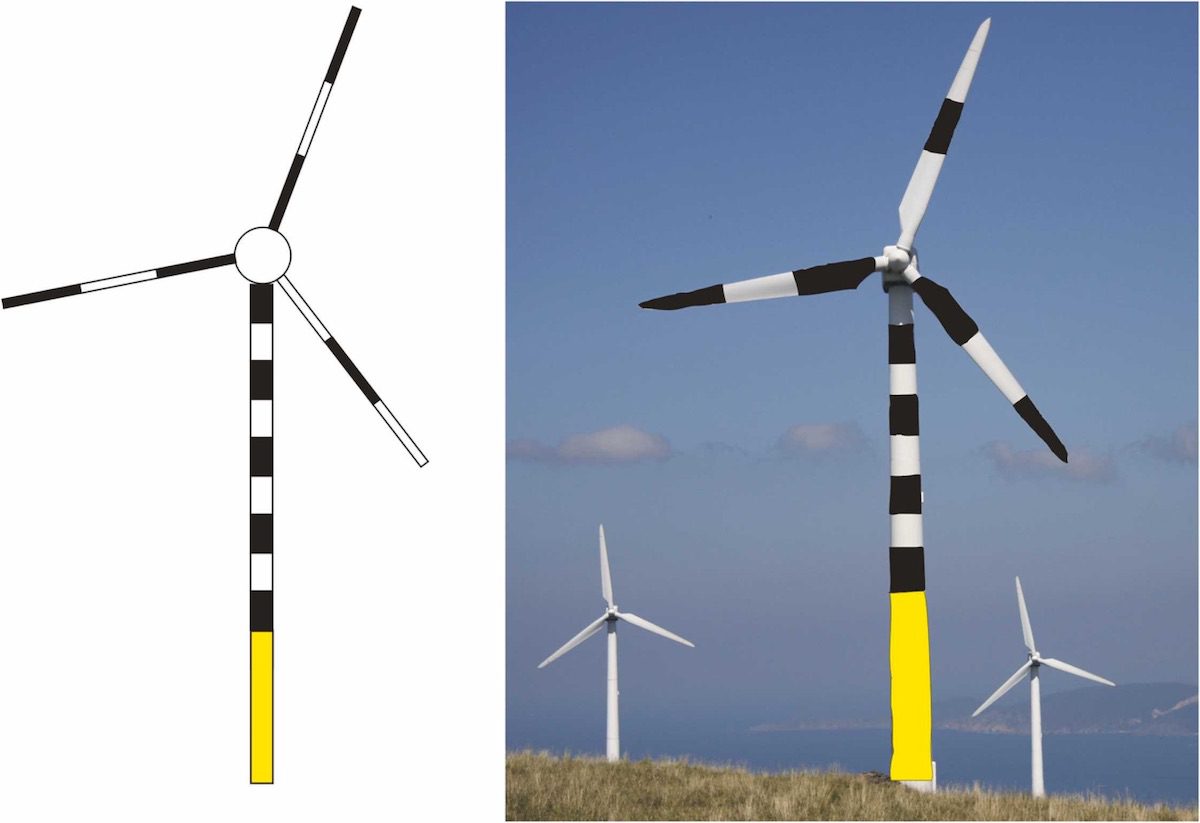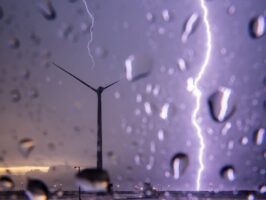Zebra-striped wind turbine blades could be the next technological breakthrough for preventing bird collisions at sea.
Two UK researchers are proposing to paint black stripes on blades and towers to turn offshore wind turbines into beacons that birds can more easily see.
They say the flickering effect of alternating black and white bands down the tower to the bottom of the blade sweep as well as on blades will allow birds to better see wind farms generally, and also in low light conditions.
“Key elements for the design of vision-based mitigation measures aimed at reducing the collision of marine birds with wind turbines should be based upon knowledge of the vision of birds, not the vision of humans,” the new research paper says.
“The measures should allow birds with different flight speeds and visual acuities to detect turbines sufficiently early to allow alteration of flight direction and avoid collision.
The proposed mitigation requires changes to the appearance of wind turbines that can be implemented at the time of manufacture. They do not interfere with statutory requirements already required for the marking of turbines for the benefit of shipping and aircraft.”
The idea — which hasn’t been tested yet — follows a Norwegian study in 2020 that found painting one blade black reduced bird strikes by 70 per cent.
Lead author Roel May discovered the same white colour scheme that is designed to hide turbines from human eyes, was having the same effect for birds.
Bad fliers and unexpected attacks
Avian eyesight, generally, is monocular on either side of the head and narrowly binocular in front.
The monocular vision allows them to see movement and to avoid obstacles when flying at high speeds — it’s great for flying through a forest but less useful for navigating an obstacle course where objects come from above as well as from the sides or in front.
Birds crash into wind turbines for many reasons, from raptors looking down rather than ahead as they hunt for prey to others that simply don’t see the slim blades or don’t expect an attack from above.
Other birds are simply bad at flying, such as the grouse-like ptarmigans which were among the heaviest casualties at the Norwegian wind farm, Smøla, in May’s study.
Collisions a key social licence issue for new projects
Even though wind tower collisions are a low risk for avian deaths, it’s still a key social licence consideration for offshore wind projects around the world.
Research from around the world shows that it is birds of prey and large seabirds that are most affected by wind farms, both of which tend to have few offspring and grow slowly so the loss of one has a proportionally greater impact on species numbers than faster breeders.
It means bird collisions are a major element of planning for the swathe of new offshore projects being proposed around Australia.
In 2019 Emma Bennett of Elmoby Ecology estimated that a single onshore wind turbine could kill up to 17 birds a year in Australia.
The research required in Australia to avoid similar death rates offshore include finding out avian migratory flight paths — a detail that for some species is still unknown — and the height at which different birds fly, is underway but has a long way to go.
In January, Keith Reid, Barry Baker, and Tasmania Birdlife spokesman Eric Woehler wrote that although Australia’s birdlife is different to the ones that have been studied extensively in the northern hemisphere, Australia can still learn from and use the monitoring and mitigation techniques developed there.
One of the tricky elements of counting bird strikes in offshore farms is not being able to collect bodies under the towers.
Flotation Energy acting Australian managing director Carolyn Sanders told RenewEconomy they use a DTBird camera monitoring system at their Scottish Kilcardine wind farm off the coast of Aberdeen. She says it’s recorded no bird strikes in two years of monitoring.
Swedish power company Vattenfall, which funded the Swedish study on painting blades black, is in the process of extending that research to the Dutch seaport of Eemshaven to reduce the risk of birds colliding with turbine blades.
In a study that began in 2022, seven turbine blades will be painted black in early 2023 and be monitored for two years through to the end of 2024.
Birds just one of many issues
Bird collisions are just one of a huge range of issues Australia’s budding wind farms must solve, from impacts on sea life and fisheries to building an industry from scratch that can make, move and install the enormous machinery offshore wind requires.
Moves such as a partnership between University of Melbourne and global energy company Flotation Energy indicate an awareness of the impending skills crunch as industry growth spurts create a race for talent.
The Gippsland zone in Victoria was the first offshore region to be designated for wind, followed by the Hunter zone in New South Wales (NSW). The NSW government has declared a second zone, the Illawarra in the south, as a location for offshore wind as well.










